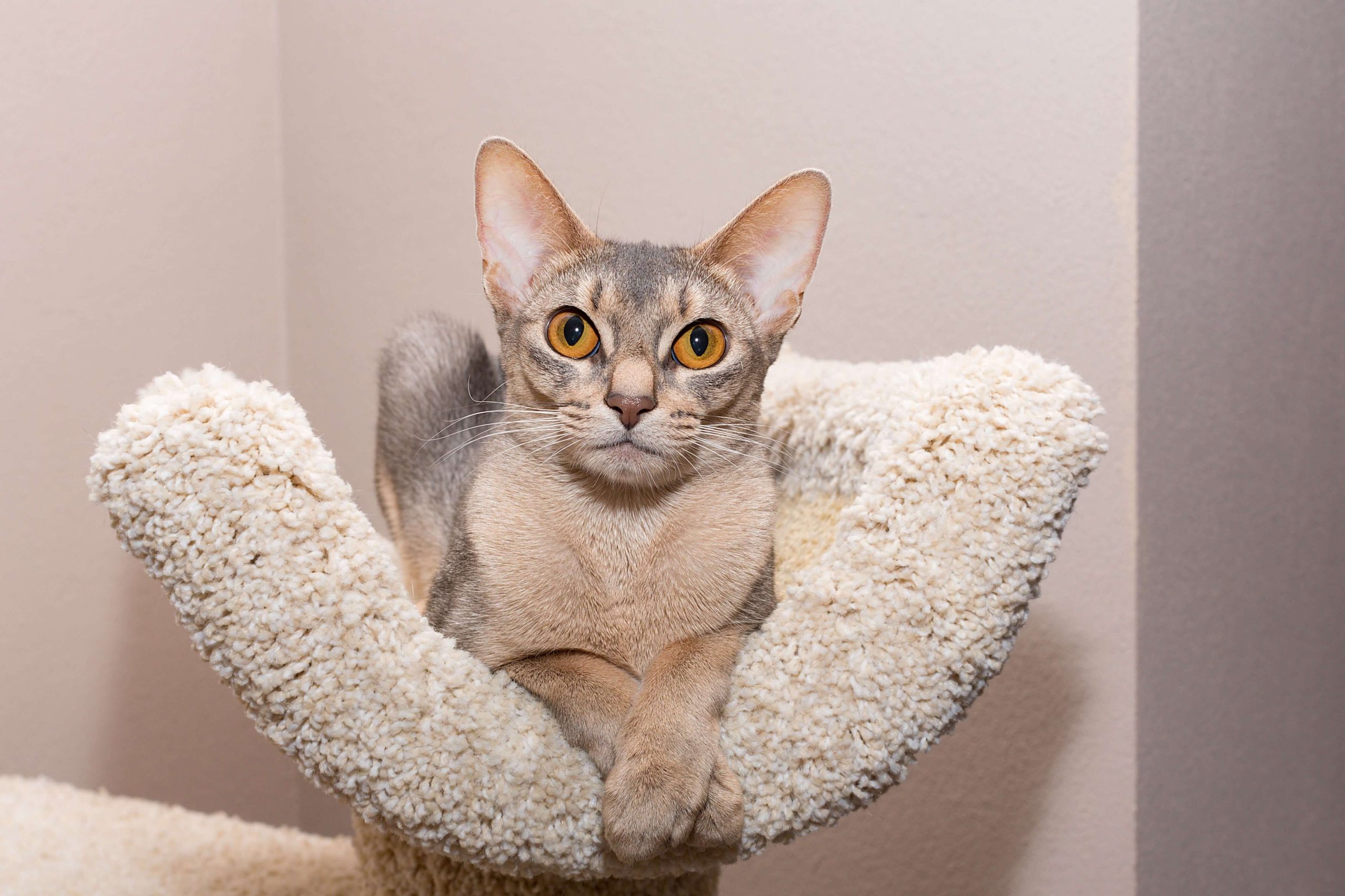With its special wild-colored fur and elegant appearance, the Abyssinian cat is a real eye-catcher. Find out everything about the origin, nature, and attitude of the old cat breed in the profile.
History and Origin of the Abyssinians
The exact origin of the Abyssinian cat is still controversial. In the meantime, however, it is certain that the cat did not develop in the former Abyssinian Empire in East Africa, as initially assumed. Their origins lie more in Southeast Asia, where cats with this special coat color still occur today. The first representative of the breed came to England from Africa in 1868 as a result of the British colonial wars. How exactly the cat got to Abyssinia from Southeast Asia is not known. A British cat book from 1874 features a picture of the breed’s first representative, Zula. The caption for the image reads: “Ms. Captain Barret-Lennard’s cat, Zula. The cat comes from Abyssinia as a result of the war”.

With its exotic, wild-colored coat, the new breed attracted a lot of attention from breeders across Europe. To further develop the stripe-free coat with ticking, they crossed the cat with domestic cats and the British Shorthair. Already in 1882, it was recognized as a new breed. This makes the breed one of the oldest in the world. In Germany, the 1st German Noble Cat Breeders Association registered the breed in 1933. A few years later, the pretty cats slowly spread to the USA. The pedigree cat suffered severe setbacks during the Second World War, which almost made it extinct. The breed has grown in popularity since the 1970s but is very rare compared to others.
Essence and Character
The Abyssinian is considered an intelligent and active cat breed that is enthusiastic about all kinds of play. Especially at a young age, the cat has an irrepressible temperament and a great urge to move. She prefers to play with other cats, which is why keeping her alone is not recommended. The curious cats are very people-oriented and follow their people everywhere. They are rarely intrusive with a quiet voice and prefer to observe every action of their two-legged friend. When stressed, the uncomplicated cats react extremely robustly and are not disturbed by anything.
The Appearance of the Abyssinians
The Abyssinian’s appearance resembles that of a small puma. They are elegant and athletic cats with long legs and small paws. The wedge-shaped head sits on a slender neck and has large, widely spaced ears. Some cats have tufts of lynx-like hair on their ears. The almond-shaped, large eyes can be green, hazel, or amber. The pedigree cat’s specially colored fur is short, soft and lies close to the body. Each individual hair is multicolored banded, resulting in a great effect. This so-called ticking can be pronounced in different ways.
The four colors in the breed standard are sorrel (bright copper red with chocolate brown bands), blue (warm blue-grey with dark steel blue-grey bands), fawn (dull beige with dark cream bands), and the typical wild color (reddish-brown with black bands). There is also a silver variant of all colors, in which the basic color is a light silver tone. Ideally, the cats are completely free of patterns and drawings.
Attitude and Care

Outdoor cat or indoor cat?
The Abyssinian is an active and freedom-loving breed that requires a lot of exercises. Locked in a small apartment, she finds it difficult to be happy. Secured freedom would be ideal for the active pedigree cat. Excursions in the fenced garden or on the balcony give the cat great pleasure. If the circumstances in the neighborhood allow it, she is also a great outdoor cat.
How much employment does the Abyssinian need?
Anyone who gets an Abyssinian should not count on a well-behaved lap cat. She loves to explore her surroundings, climb and jump. Thanks to her enormous endurance and jumping power, no place in the house is safe from her. A tall and stable scratching post is an absolute must for any owner of the breed. Here she can live out her urge to move, sharpen her claws, and rest. The clever velvet paws are also happy about any kind of intellectual activity and gladly accept intelligence toys. They enjoy being taught little tricks and like to go for walks with their owner, with or without a leash.